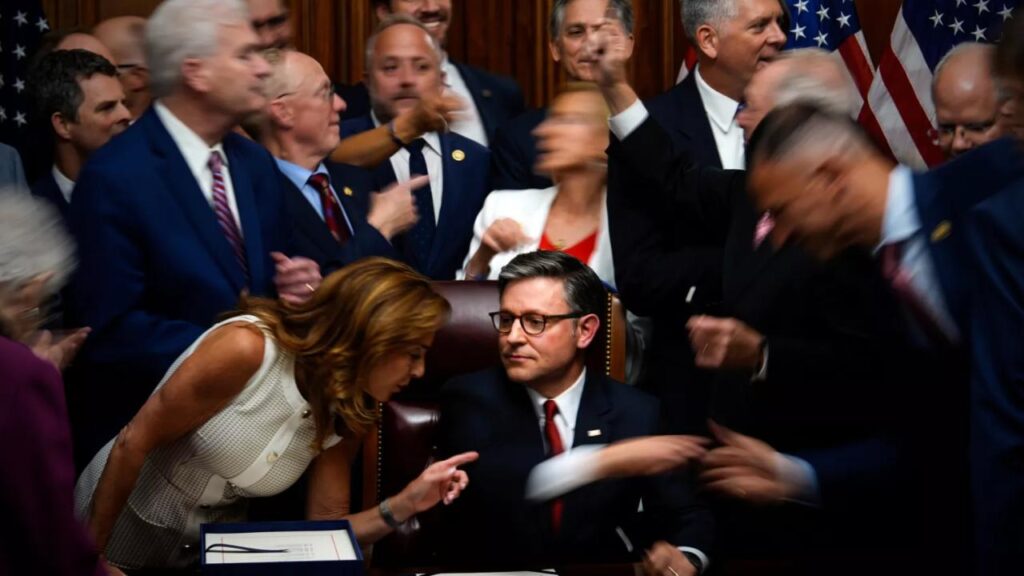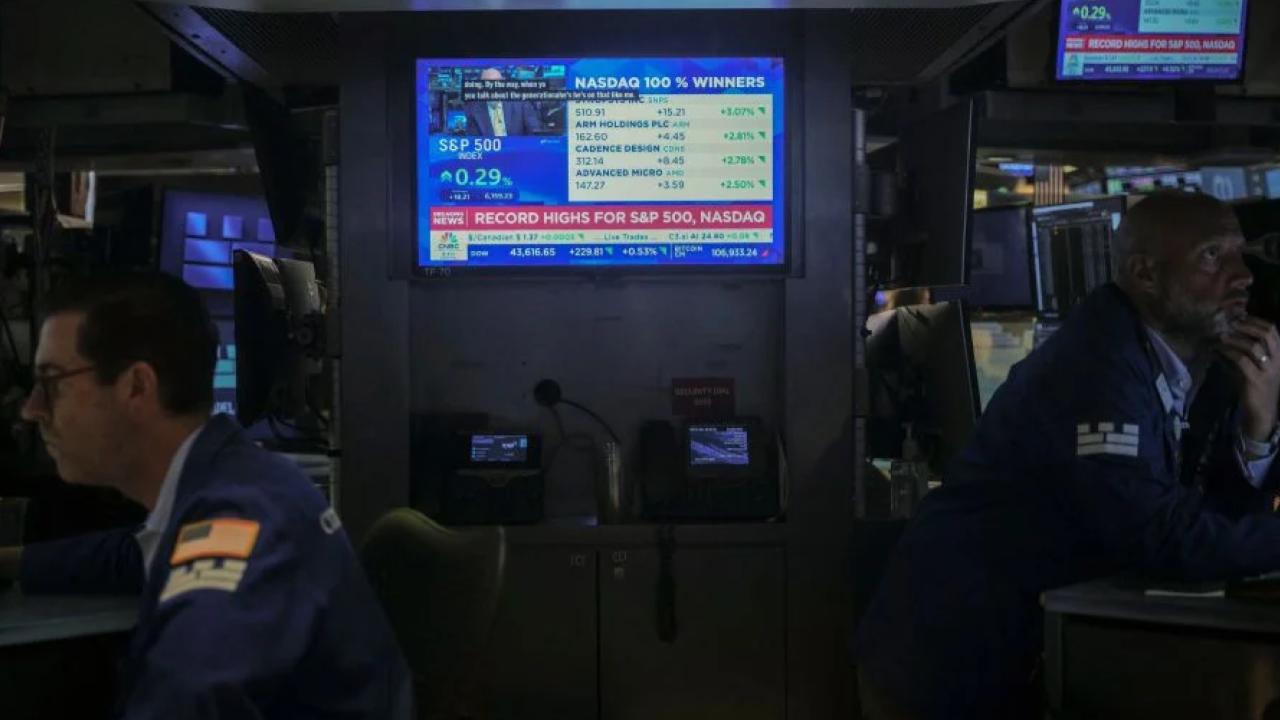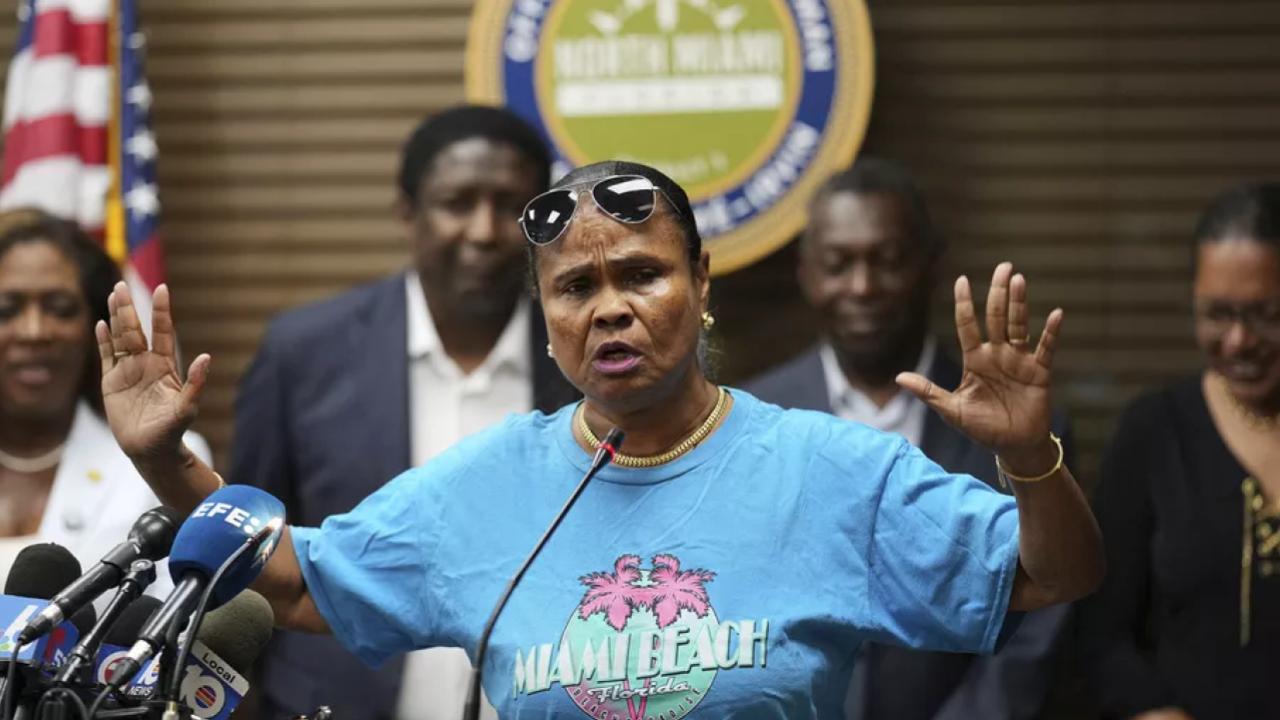When President Donald Trump signed the One Big Beautiful Bill into law on July 4, 2025, it marked one of the most sweeping changes to tax and spending policy in decades. Designed to lock in Trump-era tax cuts, slash federal aid programs, and boost energy production, the bill delivers fast benefits for high-income households—while leaving many low- and middle-income Americans bracing for tighter budgets and rising costs.

Trump’s New Tax and Spending Bill
| What to Know | Stat/Impact |
|---|---|
| Adds to U.S. debt | $3.3 trillion increase by 2034 |
| Biggest winners | Top 1% gain $1 trillion in tax cuts over 10 years |
| Safety net rollback | Up to 12 million may lose Medicaid; SNAP cuts hit working families |
| Energy policy pivot | $500 billion in clean-energy projects to be rolled back by 2035 |
Trump’s One Big Beautiful Bill gives high earners what they’ve long wanted: permanent tax cuts and fewer rules. But the flip side—trimming aid programs and ballooning debt—could hit everyday Americans in slow, compounding ways. Whether this gamble pays off may depend on where you sit on the income ladder—and whether you’re ready for what comes after the sugar high.
What Kicks In First: July–December 2025
The first wave of changes is already underway:
- Permanent tax cuts: Trump-era income brackets from 2017 are here to stay.
- SALT deduction quadrupled: The state and local tax deduction cap rises from $10,000 to $40,000 for households earning under $500,000.
- New deductions: Tips, overtime, auto loan interest, and “Trump Account” childcare savings are now tax-deductible.
- Expanded Child Tax Credit: Increased to $2,200 per child—available through 2028.
From my own experience navigating small-business taxes, the SALT deduction change alone could significantly ease filings in high-tax states like New York and California—but only for those who itemize and earn above the national median.
2026–2028: The Safety Net Shrinks
By 2026, major changes begin hitting lower-income Americans:
- Medicaid restrictions: New work requirements and state-level funding cuts could push millions off health coverage.
- SNAP (food stamps): Reductions begin mid-2026, affecting eligibility for working adults.
- Clean-energy credits: EV subsidies vanish in late 2025; solar and wind project credits phase out by 2027.
The Congressional Budget Office estimates up to 12 million could lose Medicaid by 2030. Meanwhile, SNAP cuts may cost some households $1,000–$1,600 annually in lost food assistance.

Who Gains—and Who Gets Squeezed
According to the Institute on Taxation and Economic Policy, over 70% of the bill’s benefits go to the top 20% of earners. The wealthiest 1% alone will see $1 trillion in tax savings over the next decade.
Middle-income households will notice short-term perks—like the SALT expansion and child tax credit—but many could face higher interest rates and shrinking public services by 2027.
For lower-income families, the math is bleaker: marginal tax relief is likely outweighed by healthcare losses and SNAP reductions. “It’s a redistribution in reverse,” one Brookings analyst told The Times. “It takes from the poor and gives to the rich.”
2029 and Beyond: The Hangover Years
Here’s what happens as the decade winds down:
- SALT deduction drops: Back to $10,000 after 2029 unless renewed.
- Federal deficits spike: Debt grows by over $3.3 trillion by 2034.
- Coverage crisis: Without Medicaid expansions, emergency room and out-of-pocket costs are expected to rise sharply.
Moody’s and the CBO warn these deficits may push up borrowing costs by 2027–28, meaning higher mortgage rates, auto loan interest, and credit card APRs.
FAQs
When do the tax cuts take effect?
Immediately for most Americans—affecting your 2025 taxes, filed in 2026.
What happens to my Medicaid?
If you’re on Medicaid, expect new paperwork or work mandates in 2026. Some states may cut access entirely.
Will my mortgage rate rise?
Probably by late 2026 or early 2027, due to the bill’s long-term deficit impact and Fed responses.






